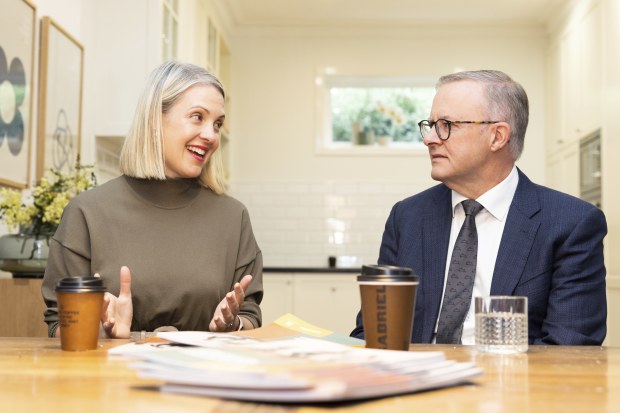Women vote for real change

Election day saw the quiet women of Australia come out against the Coalition, with opinion polls suggesting women voted against the Morrison government in historic numbers.
Women traditionally have voted right of centre, but in the latter days of the Howard government, amid the growing refugee crisis, they began to switch to the left. The 2019 election revealed the highest gender gap since 1987.
In the 2022 election, women definitely did not warm to Scott Morrison and the opinion polls suggest a gender gap as high as 10 per cent in some constituencies.

Prime Minister Anthony Albanese met Georgie Dent from The Parenthood during the election campaign. The group is part of a well-organised lobby expected to press on key women’s issues. Alex Ellinghausen
The huge influx of new, highly capable women MPs – a refreshing break from the political apparatchik class that typically dominates parliament – is likely to see a real focus on issues that affect women most.
Many of these are in the sectors of the care economy most in need of support and fundamental reform. Typically, women are the ones who have been left to make the system work. The shameful failure to end family violence sits at the top of an apex of complex social policy challenges that include childcare, aged and palliative care, mental health and disability support.
Similarly, pay and employment equity, as well as redesigning work around women’s needs – including locking in flexible and remote working – are likely to remain front-line economic issues that, if not addressed, will see the incumbent government punished again at the next election.
Under a sustained program, the Australian Public Service has been a true leader in gender equity, with women now occupying more than 50 per cent of the top four pay bands. This gives the incoming government a major resource to work with as it navigates the social policy space, where all the medium and longer-term funding projections are pointing sharply upwards.
This was the first election where the Millennials (and their younger siblings from Generation Z) clearly outnumbered the Baby Boomers, a key demographic change that underpinned the shift to the left evident in the polling.
The oldest of the Boomers are in their mid-70s, and over time the Millennials will only grow in electoral influence.
Well-directed by a gaggle of media-savvy and strategic leaders, the highly organised women’s movement now has the numbers to force generational change on a political system that has been slow to respond to their needs.
Subscribe to gift this article
Gift 5 articles to anyone you choose each month when you subscribe.
Subscribe nowAlready a subscriber?
Introducing your Newsfeed
Follow the topics, people and companies that matter to you.
Find out moreRead More
Latest In Federal
Fetching latest articles